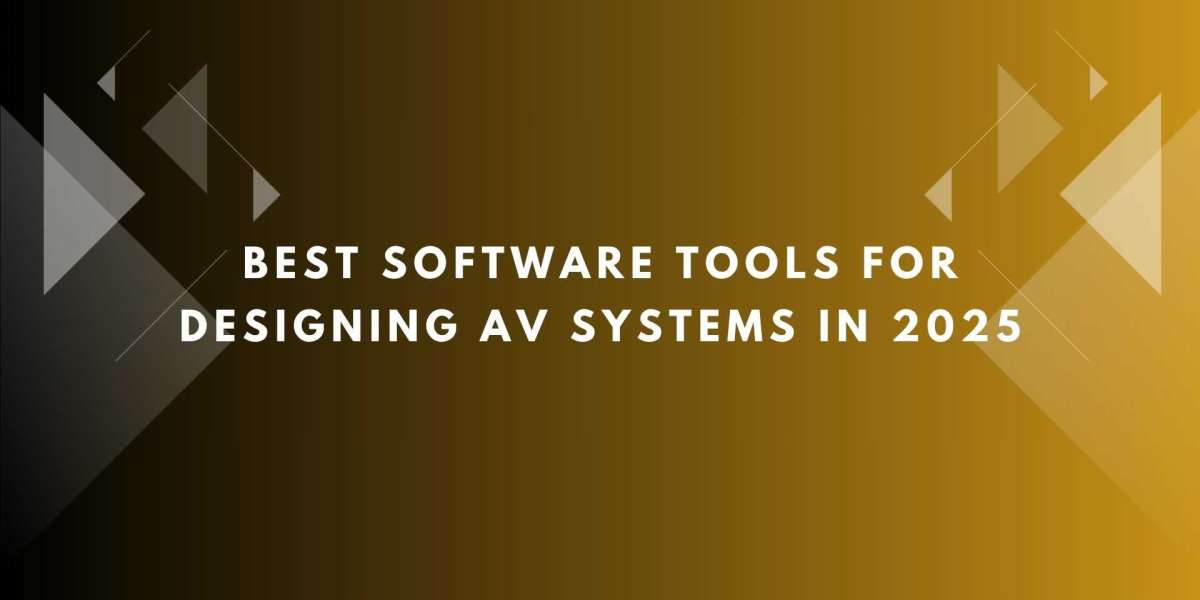Designing AV systems has become more advanced than ever before. With hybrid workspaces, smart buildings, and immersive environments now the norm, AV professionals need powerful software tools to create accurate designs, streamline workflows, and ensure flawless execution. The right software not only saves time but also reduces errors and helps deliver better results for clients. In this blog, we highlight the best software tools for designing AV systems in 2025. Whether you are a beginner or a seasoned integrator, these platforms will help you stay ahead in the evolving world of AV technology.
1. XTEN-AV
XTEN-AV continues to lead the way in AV system design software in 2025. Known for its AI-driven approach and cloud-based platform, XTEN-AV makes designing AV systems faster, smarter, and more collaborative. The software allows users to create detailed schematics, signal flow diagrams, and proposals in just a few clicks. With built-in libraries of thousands of AV products, designers can drag and drop components to build accurate designs that match real-world installations.
One of the standout features of XTEN-AV is its integration with project management tools and real-time collaboration options. Teams working across locations can co-create designs, share updates instantly, and maintain version control without confusion. The software also offers automated cable labeling, rack layouts, and equipment lists, helping AV professionals deliver complete documentation packages efficiently.
If you are designing AV systems for complex environments such as conference rooms, classrooms, or auditoriums, XTEN-AV is a top choice thanks to its precision, flexibility, and ease of use.
2. D-Tools System Integrator (SI)
D-Tools System Integrator, often called D-Tools SI, remains a popular choice for AV integrators in 2025. The platform offers a robust set of features for designing AV systems, creating detailed proposals, and managing installation projects. With its powerful drawing tools and integration with AutoCAD and Visio, D-Tools SI helps users build professional schematics and floor plans.
In addition to design functions, D-Tools SI includes powerful business management tools. These features cover budgeting, scheduling, and procurement, making it an all-in-one solution for firms that handle AV design and installation from start to finish. The software also links with manufacturer databases, so users can access up-to-date product specs and pricing.
3. AutoCAD with AV Plug-Ins
AutoCAD has long been a standard tool in engineering and architectural design, and it continues to serve AV professionals who need precise control over their schematics. In 2025, AutoCAD remains relevant for designing AV systems, especially when paired with specialized plug-ins for AV design. These plug-ins add libraries of AV symbols, tools for drawing signal paths, and options for generating bills of materials.
While AutoCAD offers unmatched flexibility, it requires more manual setup compared to platforms like XTEN-AV or D-Tools SI. It is best suited for AV designers who work closely with architects or engineers and need their designs to integrate into larger building plans.
4. Stardraw Design 7
Stardraw Design 7 continues to be a favorite for AV professionals who want a dedicated AV system design tool that is easy to learn and use. The software provides libraries of AV symbols, intuitive drag-and-drop functionality, and options for creating schematics, rack layouts, and panel designs. It also supports customized symbol creation for unique projects.
Stardraw stands out for its straightforward interface and focus on documentation. It helps AV designers produce clear, professional diagrams and reports that can be shared with clients, installers, and project teams.
5. Visio with AV Templates
Microsoft Visio, enhanced with AV templates and symbol libraries, remains a simple yet effective tool for AV design in 2025. While not as advanced as XTEN-AV or D-Tools SI, Visio offers flexibility for creating basic signal flow diagrams, floor plans, and rack layouts. It is a good choice for smaller projects or teams that need an affordable and familiar platform.
Visio integrates well with other Microsoft products, making it useful for organizations already using Microsoft 365. When combined with custom AV stencils, it provides a basic but functional option for designing AV systems.
What to Look for in AV Design Software
When selecting software for designing AV systems, consider the following:
Ease of use: A tool that simplifies complex designs helps speed up your workflow and reduces errors.
Product libraries: Access to up-to-date manufacturer data ensures your designs reflect real-world components.
Collaboration: Cloud-based platforms and version control features make it easier for teams to work together.
Documentation: The ability to generate equipment lists, cable labels, and detailed reports adds value for clients and installers.
Integration: Compatibility with project management, procurement, and architectural tools helps streamline your entire process.
Conclusion
In 2025, AV design software is more powerful and versatile than ever. XTEN-AV stands out as a leading solution for designing AV systems thanks to its AI-driven features, cloud-based platform, and focus on collaboration. However, tools like D-Tools SI, AutoCAD, Stardraw, and Visio also offer valuable features depending on your project needs and workflow.
By choosing the right software, you can create accurate designs, save time, and deliver better results for your clients. The key is to match your software to the scale of your projects, the skills of your team, and the demands of modern hybrid and smart environments. With the right tools in hand, you can take your AV designs to the next level.
Read more: https://3rrend.com/read-blog/33559








